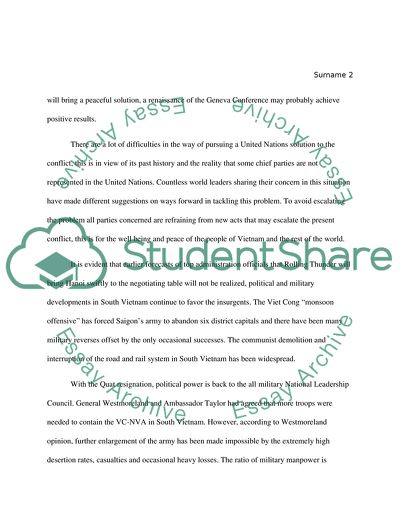Cite this document
(America's Diplomacy during the Vietnam War Essay Example | Topics and Well Written Essays - 1750 words, n.d.)
America's Diplomacy during the Vietnam War Essay Example | Topics and Well Written Essays - 1750 words. https://studentshare.org/history/1768595-americas-diplomatic-history-during-the-vietnam-war
America's Diplomacy during the Vietnam War Essay Example | Topics and Well Written Essays - 1750 words. https://studentshare.org/history/1768595-americas-diplomatic-history-during-the-vietnam-war
(America'S Diplomacy During the Vietnam War Essay Example | Topics and Well Written Essays - 1750 Words)
America'S Diplomacy During the Vietnam War Essay Example | Topics and Well Written Essays - 1750 Words. https://studentshare.org/history/1768595-americas-diplomatic-history-during-the-vietnam-war.
America'S Diplomacy During the Vietnam War Essay Example | Topics and Well Written Essays - 1750 Words. https://studentshare.org/history/1768595-americas-diplomatic-history-during-the-vietnam-war.
“America'S Diplomacy During the Vietnam War Essay Example | Topics and Well Written Essays - 1750 Words”. https://studentshare.org/history/1768595-americas-diplomatic-history-during-the-vietnam-war.


